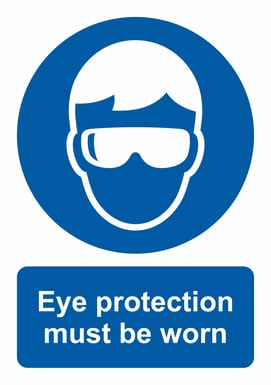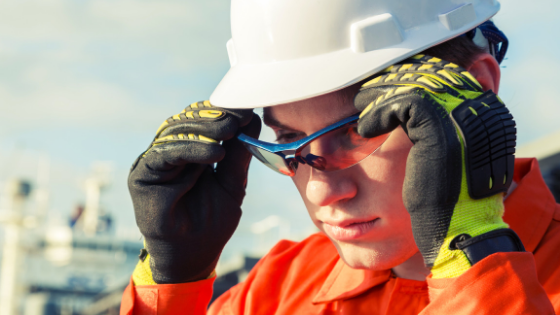Every day, 2,000 workers in the U.S. suffer a job-related eye injury requiring medical treatment, with one-third of them requiring treatment in hospital emergency departments.
With 2,000 job-related eye injuries occurring daily in the U.S., it's evident that proper eye protection is crucial in preventing these incidents. So, when exactly should employees be wearing safety glasses or eye protection? Here's what managers should be aware of.
The Basic Rules of Eye Protection
OSHA standard 1910.132 lays out an employer’s responsibility for providing eye and face protection. According to the standard, personal protective equipment (including eye protection) must be provided, used, and maintained in a sanitary condition wherever it is necessary for use.
As with other forms of PPE, the employer must pay for and provide eye protection. The one exception is prescription safety glasses, though this only applies if you allow the employee to use the safety glasses outside of a work setting. The logic follows that if an employee essentially uses these as personal safety glasses in all contexts, they will carry the glasses with them between one job and the next, and in that case, it makes little sense for employers to pay.
Either way, employers cannot require employees to pay for or provide their own PPE. They can, however, require employees to wear safety glasses or eye protection as a condition of work if that eye protection is necessary to do the job safely.
When Are Employees Required to Wear Safety Glasses or Eye Protection?

According to OSHA standard 1910.133 (Eye and face protection), employers are responsible for ensuring that employees use the appropriate eye and face protection against hazards such as:
- Flying particles
- Acids
- Caustic liquids
- Chemical gases
- Chemical vapors
- Molten metal
- Liquid chemicals
- Light radiation
In any scenario where the potential for an eye hazard exists, it is essential to don the appropriate eye protection. Failure to do so not only jeopardizes safety, but also signifies a neglect of the employer's duty to uphold OSHA safety standards.
What Type of Protective Eyewear Do They Need?
All eye and face protection must comply with the following consensus standards:
- ANSI/ISEA Z87.1-2010, Occupational and Educational Personal Eye and Face Protection Devices
- ANSI Z87.1-2003, Occupational and Educational Personal Eye and Face Protection Devices
- ANSI Z87.1-1989 (R-1998), Practice for Occupational and Educational Eye and Face Protection
In addition, under standard 1910.133(a)(5), the employer must ensure that each affected employee uses safety glasses with the appropriate shade filter for the task, based on the table contained in the standard. And regardless of type or filter, all safety glasses must include side protection from flying objects.
Safety Beyond PPE
Employers must ensure that their employees wear safety glasses or eye protection whenever there is a potential hazard that could endanger their eyes. This responsibility falls on the employer to provide the necessary protective gear to keep their workers safe on the job.
The great news is that understanding and fulfilling these safety obligations doesn't have to be a stressful task. Our compliance management software simplifies the process by consolidating all the relevant standards and regulations into one easy-to-navigate dashboard. With this tool, you can stay on top of your safety program and ensure that you are meeting all necessary requirements to protect your employees.
Are you ready to prioritize safety without the added stress? Reach out to us today to discover how our software can streamline your safety compliance efforts and keep your workplace safe for everyone.

